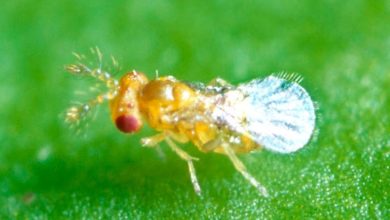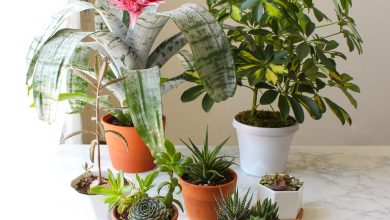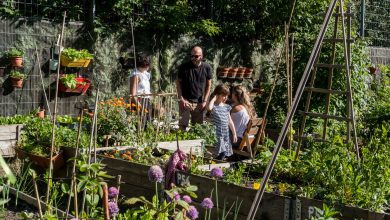Hackberry or Lidonero: [Planting, Care, Irrigation, Substrate, Problems]
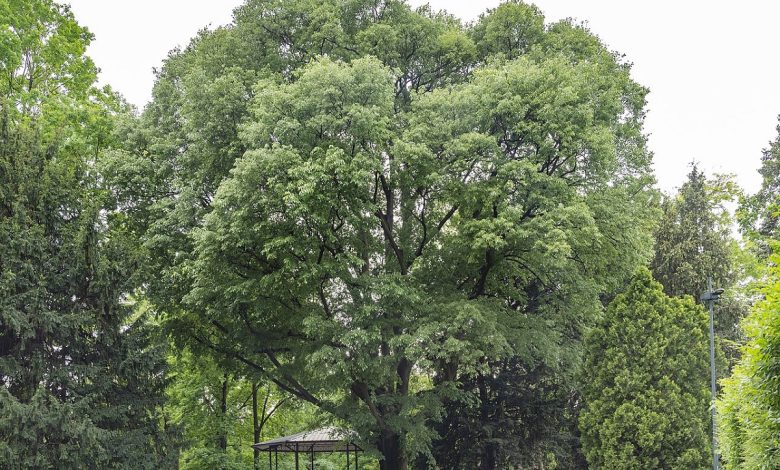
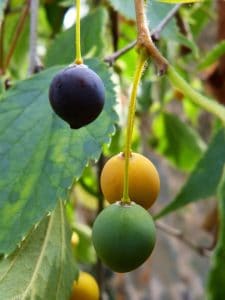 The hackberry (Celtis australis) is a strongly built tree that is located in areas close to the Mediterranean, almost always alone and that produces fruit.
The hackberry (Celtis australis) is a strongly built tree that is located in areas close to the Mediterranean, almost always alone and that produces fruit.
Within the scientific world it is known as Celtis Australis, although different communities call it almarzo, or ‘tinsmith’, among others.
Its main characteristics lie in its size, since it is capable of reaching up to 25 meters in height when it is in appropriate areas.
It is a species of rather warm climates, being necessary to keep it protected from low temperatures and, above all, from frost.
Were you looking for a species with characteristics similar to hackberry? It’s your turn to get down to earth with this information.
Important points when planting Almez Tree
- When? In spring.
- Where? In a clear area where it gets enough sunlight each day.
- How do we prepare the land? Ensuring that it has a limestone consistency with a stony addition.
- How should we water? Irrigation will depend on age, since its needs when it is young are greater than in adulthood.
- How often do you have to water? For a young hackberry, two or three times a week is ideal. An adult, once a week.
- What pests and diseases does it have? The two main elements that can affect you are fire blight and rust.
Characteristics of hackberry or lodon
 Hackberry or lodon is a large deciduous tree native to North America.
Hackberry or lodon is a large deciduous tree native to North America.
It is also known as the nettle tree, lodón, the sugar bowl, the beaver, aligonero, ledonero, lodoño, quicavero or latonero.
It has a moderately long-lived hardwood that is light in color, yellowish gray to light brown with yellow streaks.
Common hackberry is easily distinguished from elms and some other slimes by its corky bark with warty bumps.
The leaves are distinctly asymmetrical and coarse in texture. It produces small fruits that turn orange-red to deep purple in the fall, often remaining on the trees for several months.
The hackberry is easily confused with the sugarberry (Celtis laevigata) and is most easily distinguished by its range and habitat. The common musk tree also has broader leaves that are thicker above the sugar bowl.
Size of the hackberry or common lidonero
The hackberry is a medium-sized tree, 9 to 15 meters tall, with a slender trunk.
It has a beautiful rounded head and hanging branches. It prefers rich, moist soil, but will grow on gravel or rocky slopes. The roots are fibrous and it grows rapidly.
In western areas, the trees can grow up to 29 meters.
The maximum age reached by hackberry is between 150 and 200 years, in ideal conditions.
The bark is light brown or silver-grey, broken on the surface into thick, tight scales and sometimes rough with excrescences; the pattern is very distinctive.
When to plant a hackberry tree?
 The planting of hackberry should wait until spring is late to start it.
The planting of hackberry should wait until spring is late to start it.
This will make it easier to give it the most appropriate conditions to develop without complications and allowing it to adapt to the place before the next winter cycle.
Where to plant a hackberry?
The hackberry is an imposing tree in terms of its height and this requires that a clear area be chosen for its planting.
It is important that he is offered the possibility of receiving a good amount of sunlight throughout his development to ensure that he has optimal health.
How to prepare the land?
The correct selection of the land is essential to ensure that the hackberry is established and grows very well.
In general, it has a preference for limestone soils, with some stony details that help maintain stability in the future.
However, it is very important that it has good drainage, since they are usually planted in spaces with nearby water sources and rot must be avoided.
How do we water a hackberry?
 Irrigation will vary in quantity and frequency depending on the texture of the tree.
Irrigation will vary in quantity and frequency depending on the texture of the tree.
When it is younger, the development requires a considerable amount of water, especially in the days of high summer.
However, in adulthood, this demand decreases until it becomes necessary in very little quantity.
How often do we water?
The watering needs for a young tree must be met thoroughly until it is well established in the chosen space.
The basic proposal rotates around 2 or 3 times a week, while in large trees they can already be reduced to 1 time a week.
The adult tree is capable of tolerating droughts, as long as they do not occur very frequently and not for such long periods.
How to plant a hackberry step by step?
Hackberry is a species that has two possible ways of reproduction. The first one is by seeds and the second through the spikes.
In both cases, a similar work process will be followed, which we explain below:
- Collect the seeds or spikes that you will use to sow.
- Select the place in which you will carry out the procedure, ensuring that it is clear so that the plant receives enough sunlight. Take into account that if you are going to plant more than one specimen, they must be at a considerable distance from each other to avoid future complications.
- Bury the seeds or spikes ensuring a sufficient depth so that they do not come off due to the action of the wind.
- Water abundantly at this first moment, without creating puddles, and then repeat the process up to three times a week. Here the important thing is to prevent the soil from losing its moisture level.
What care does a hackberry need?
Hackberry is a very good tree from every point of view, as it is adaptable to climatic and soil conditions.
- Their biggest problem around growth and development has to do with the formation of the branches.
- These tend to grow in a very disorderly way and collide and tangle with each other , so you need attention to prevent such a problem from affecting you.
- Pruning, on the other hand, is not a necessary action to take if the tree is growing according to its particular conditions.
- In case it is essential to carry it out, it is best to work only with the thin branches, because with the thicker ones it could cause a lot of damage.
What pests and diseases affect lodon?
Hackberry is one of the most striking species to plant in highly polluted spaces because it resists everything very well, even in hostile environments.
In addition, it does not need care in relation to the presence of diseases because its wood is strong and the entire structure, in general, is very resistant.
Beware of fungi and pruning
 What could happen is that some fungus settles in its structure due to injuries caused as a result of poor pruning.
What could happen is that some fungus settles in its structure due to injuries caused as a result of poor pruning.
As we mentioned before, pruning is not recommended, much less when it occurs on thick branches.
In this case, a fungus known as rust could begin to affect the plant, causing considerable damage to the entire structure.
Some people familiar with the species have been able to detect the presence of a pest known as fire blight.
However, it is very rare and does not tend to cause such extensive damage.
If a hackberry is planted in a garden, it will be giving an invaluable gift to future generations, as it is a species that can live for up to 5 centuries.
Another important point is that you will get to enjoy a highly valued shade due to the level of leafiness that reaches its glass.
And this is a condition that will last from early spring until well into fall.
How long does hackberry live?
The hackberry is a species of ornamental plant of great longevity, being able to exceed 600 years of life.
How long does hackberry take to grow?
Hackberry is a species that grows quickly, especially when planted in full sunlight. Under these conditions it can be formed at 5 years.
How long does it take to produce fruit?
Barely 4 or 5 years old, the hackberry will be able to produce its first fruits.
Can it be grown in a pot?
They are trees that accept planting in pots in their original version (although they develop a smaller height) and that can also be worked as bonsai.
How many times does hackberry produce fruit?
The production is annual, at the end of autumn, after the flowers have advanced in their process during the summer.
Should the hackberry be pollinated to obtain fruit?
Hackberry pollination is simple and straightforward because it uses the wind as a means of transmitting pollen.
In addition, male and female flowers coexist on the same tree, as well as hermaphrodite versions, so a single specimen is more than enough.
How cold can hackberry tolerate?
It is able to tolerate cold down to -17°C. That means it will even do fine in a frost.
What does damage it considerably are late frosts, so you have to be vigilant.
How many hackberries can be planted per hectare?
Because it is a large tree, approximately 100 specimens must be planted in one hectare.
In any case, it will depend a lot on the conditions of the land and the way of life that the trees will have.
What kind of fertilizer does hackberry need?
Fertilization of this species is simple. It is based on decomposed organic matter that will be applied to your base annually.
In case of using mineral fertilizer, the projection is one application every 20 days for the spring and summer period.
How much heat and/or drought can hackberry tolerate?
Heat is not a problem for the hackberry, which is capable of living in areas that reach up to 40° C in summer.

![Photo of The Complete Guide to Persimmon Cultivation [What You Should Know]](https://www.complete-gardening.com/wp-content/uploads/2022/08/the-complete-guide-to-persimmon-cultivation-what-you-should-know-390x220.jpg)
